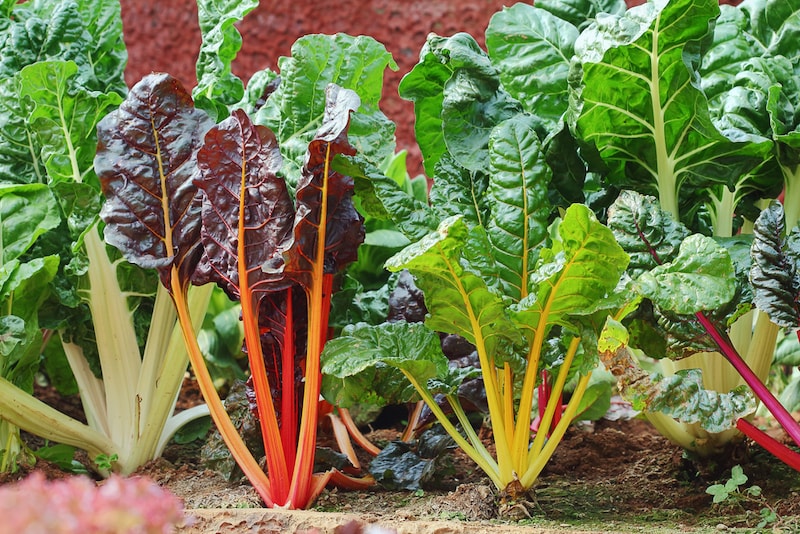For the best advice on growing chard, we’ve turned to the online growing community to showcase some of the best bloggers, YouTubers, and Instagrammers who have shared their passion for this lovely leafy green. If you’re looking for helpful hints to get the best from your Swiss chard, these highly knowledgeable growers are well worth checking out. Decided to grow your own? Browse our full range of chard seeds and plug plants for inspiration.
Contents:
- Best advice on sowing chard seeds
- Best advice on planting chard
- Best advice on growing chard in containers
- Best advice on chard pests and diseases
- Best advice on harvesting chard
Best advice on sowing chard seeds
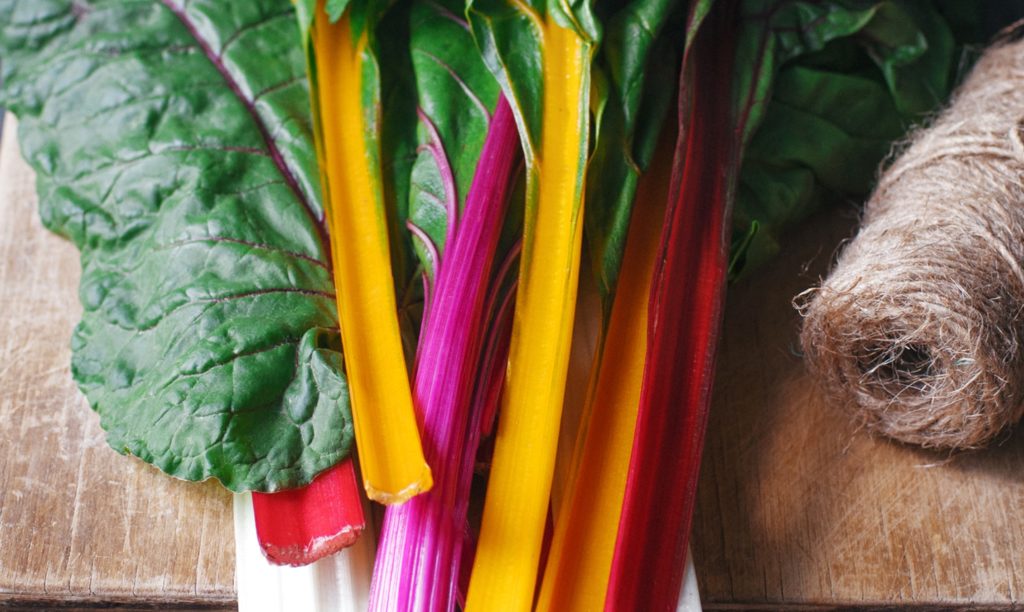
Image: ‘Rainbow’ Chard seeds from Suttons
Sow chard at least twice a year, says Paulo from The Urban Gardener – first in March/April, then again in the summer or the autumn. Paulo plants his last seeds in the first couple of weeks of September, then grows his chard on in the polytunnel for winter greens. Using a modular seed tray, Paulo advises planting one seed per cell – as he explains, each knobbly seed actually contains several individual ‘true’ seeds.
Chard is very simple to grow, says Claire Burgess from Claire’s Allotment. Here she demonstrates exactly what you need to do to sow it directly into the ground. Beginning by lightly turning over the soil with a trowel to work in any compost or manure, Claire then marks a shallow groove which she waters before sowing thinly and lightly covering.
To make bolting less likely, Rekha Mistry from Rekha’s Garden Kitchen delays planting her chard until towards the end of May. She sows individual seeds in paper pots and then plants out her seedlings in July. Rekha says her chard is well established by the end of August and then, “by early September, as the weather starts to cool down a little, that is perfect temperatures for these plants to thrive.”
“10/10 recommend #rainbow chard it lasts for ages,” says Izzy of @littleterracegardenat35. To prove her point, she posts a snap of last year’s chard which she says “shows no signs of slowing down.” A great green to brighten your plate especially during the ‘hungry gap’ when few other greens are cropping, chard is a great option for home growers everywhere.
Best advice on planting chard
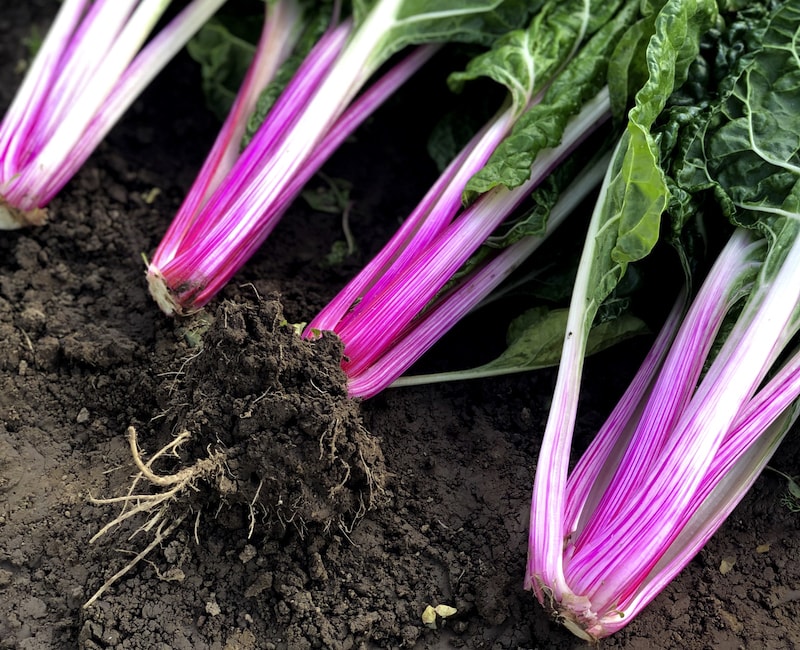
Image: Swiss chard seeds ‘Peppermint’ from Suttons
Successional planting is a great way to ensure a steady supply of fresh tender chard leaves and stems, says Benedict Vanheems at GrowVeg.com. That said, regular watering is a must, especially during dry summer weather as chard is prone to bolting (running to seed). If this happens, Benedict says your plants “should be dug up and added to the compost heap as they’ll stop producing tender leaves.”
Chard keeps producing leaves all year, but you should protect your plants from heavy frosts. Over at Huw Richards’ eponymous YouTube channel, he explains that when the thermometer dips, you should cover your chard with a cloche or, as he demonstrates, “a thick layer of mulch such as hay.” When the weather warms up, Huw says you can remove the mulch and fresh tender leaves will soon appear.
“I know I rave about this leafy green a lot but I just adore it,” says Katie from Lavender and Leeks. She particularly loves growing “glorious chard” for its colour and the fact that it’s a true ‘cut and come again’ veg. She sows hers in old potato beds in July and says, “they’ve been putting on a glorious show of the most beautiful colours which are looking spectacular on my Autumn allotment.”
Best advice on growing chard in containers
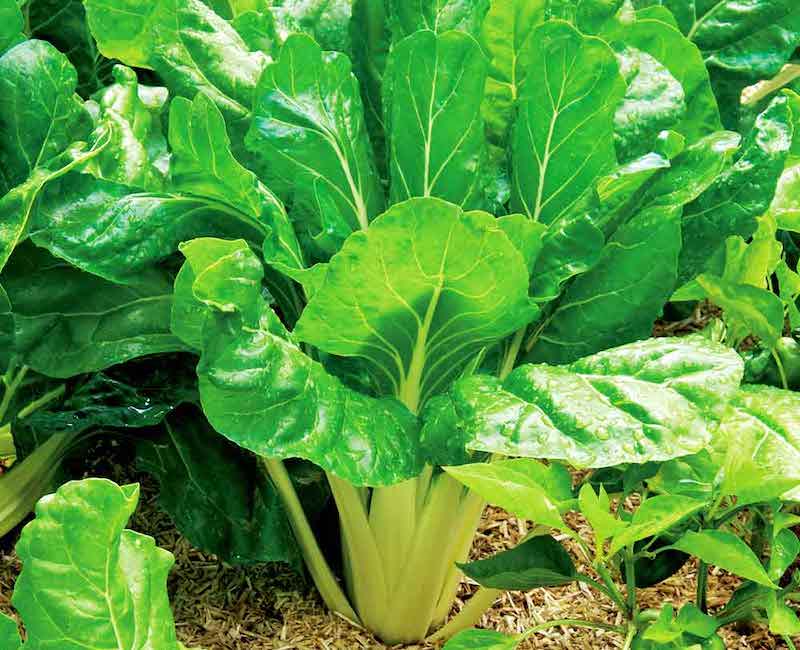
Image: Floramedia
Perpetual spinach – which is actually a variety of chard – is a great container vegetable, says Pete from Real Men Sow. He says it’s also “shade tolerant, making it perfect for small spaces, patios, and balconies.” Pete doesn’t bother to thin his chard, but if you do, he recommends planting the thinnings for even more of this delightful year-round crop – an excellent addition to your winter patio or balcony garden.
To plant a pot with chard seedlings, first fill a nice big container with compost, finishing with a layer of topsoil to help hold in moisture, says Peter Thorndycraft from A Thorny Pot. Position your chard seedlings fairly close together, Peter says, because they don’t bush out that much. See his full post for more container growing tips.
Chard is so easy to grow in containers that sometimes it self-seeds, as Sam from @sams_allotment_n_life showcases. She says: “If you don’t want them there, simply pull up, re-situate or put in a pot to grow on,” but that said and, as her healthy-looking chard attests, it’s usually best to let nature take its course whenever you can.
Best advice on chard pests and diseases
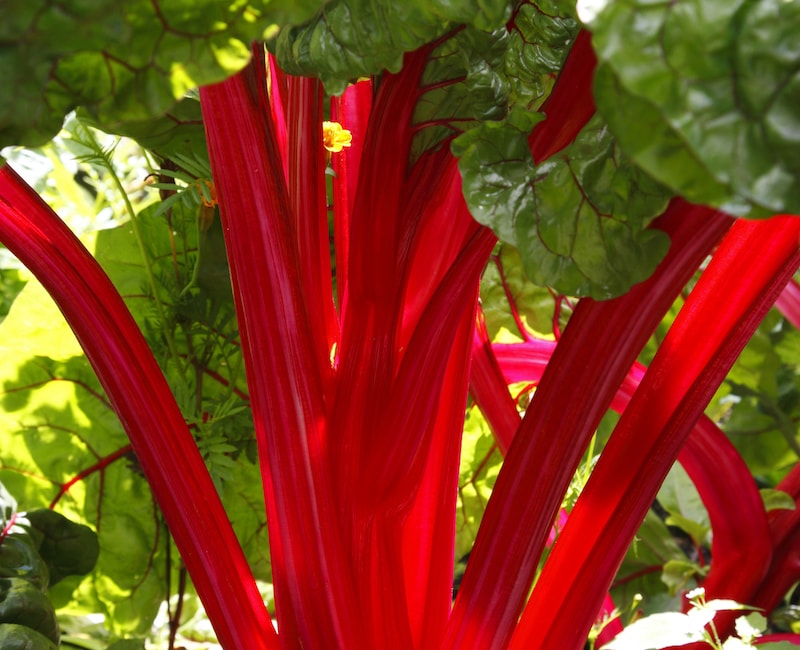
Image: Beet (Leaf) Seeds ‘Rhubarb Chard’ from Suttons
“Chard is prone to being attacked by leaf miner,” says Peter Thorndycraft at A Thorny Pot. Keep a close eye out for leaves which look “damaged and burnt” and remove and dispose of any that you see. Peter says even if there are only a couple of strong leaves remaining after your purge, the plant will continue to grow happily.
When the weather is damp and humid, chard can be prone to downy mildew which particularly affects young, tender growth, says Oliver Wright from Garden Tips 360. If you live in one of the warmer, wetter parts of the country, his advice for avoiding unappetising leaves is to plant thinly for good air circulation. See his full article for more tips.
Best advice on harvesting chard
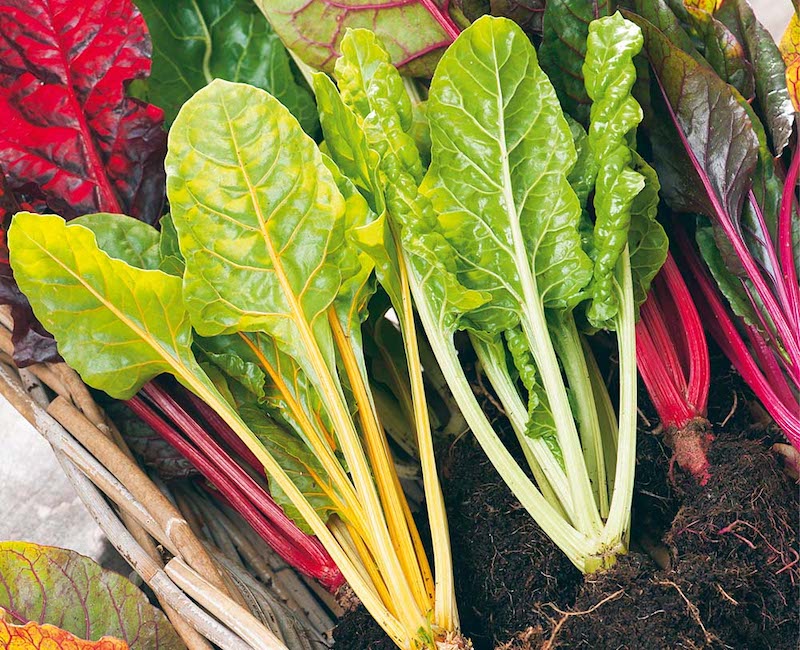
Image: Floramedia
Oliver from Garden Tips 360 is also an excellent source of info when it comes to harvesting your chard. He says: “cut the outer leaves first…then try cutting the leaves at the centre.” Oliver’s top tip is to cut the leaves well before they reach full size because mature leaves aren’t as nice. In fact, says Oliver, you can cut chard as soon as it’s above 5cm in height – just leave a neat little stump and the plant will grow back.
Even if you do leave the leaves a little too long, they’re still worth picking, says Vicky over at @vicky.blyde. Even though the leaves of her beautiful chard “will be too old and chewy…the stems are still good, and it looks so pretty.” And a top tip from our horticultural team here at Suttons: if your chard has gone over, compost the leaves but use the stalks to make super healthy vegetable stock.
“When the weather starts to get really warm, chard starts sending up thick (can be up to 3cm in diameter) flowering stems from the centre. These can be picked when immature and make a great bulky, fast growing vegetable” says Jessi from Not a Horticulturist. She goes on to explain that after you’ve picked the main flower stem, the plant will send out smaller side shoots which you should pick as well. This keeps your chard producing for longer and provides a great extra ingredient for your stir fry.
If you choose not to pluck out and eat the flowers then why not take a leaf from Susie Challen’s book? Posting great gardening snaps over at @mountkent, she says she dug up her bolted rainbow chard and moved it to the flower border in her kitchen garden where its colourful stems continued to delight. Susie loves her chard because it’s “easy to grow from seed too, [is] great for bees and lasts several years.”
Over at My Home Farm, homesteaders Mars and Kirsten say their Swiss Chard thrives in their flower beds: “We love growing chard even amongst flower or herb beds, it’s such an attractive leaf and great filler!” They’re also not averse to including this lovely leafy green in a flower arrangement or two, as you’ll see if you head over to their Insta.
Best chard recipes
Katie from Lavender & Leeks is a Swiss chard fan who says this green tastes particularly great in an omelette with a few slices of chorizo. Obviously a lady of discerning taste, you’ll also want to try her Swiss chard quiche made with lots of lovely chard plus, among other ingredients, bacon and Gruyere cheese. If that sounds nice, head over to Katie’s blog for the full recipe which feeds four.
Pizza topping, veg pie filling, and stir fry feature among Kelly of @garden_days_girl’s top culinary uses for Swiss chard. Head over to watch her Insta reel for more fab suggestions. Kelly says, “Chard appreciation society, are you in?…or out?” With these cooking tips, we think you’ll definitely be “in”!
We hope you’ve enjoyed our selection of the best advice on growing chard. With several sowing windows through the year, we’re sure you’re champing at the bit to get out there and grow your own wonderful, colourful and delicious crop.
Lead image: Shutterstock
Last Updated on November 8, 2024 by Suttons Horticultural Team

